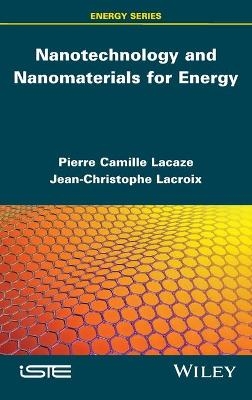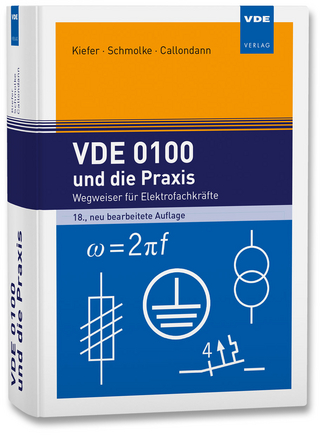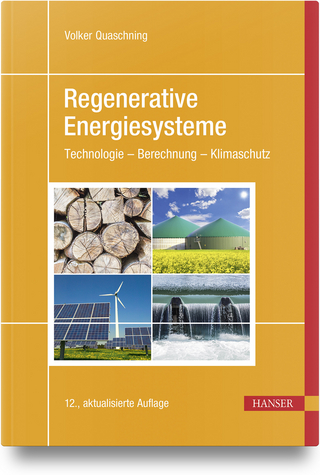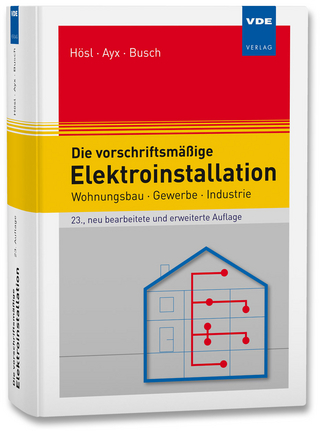
Nanotechnology and Nanomaterials for Energy
ISTE Ltd and John Wiley & Sons Inc (Verlag)
978-1-78630-497-1 (ISBN)
Some of these nanomaterials, including fullerenes, carbon nanotubes, nanodiamonds and carbon dots, were discovered well before the 2000s. Others are more recent, including graphene (the leading material of the 21st century) as well as many mineral materials developed at the nano scale: atomic clusters, metal or semiconductor nanoparticles, two-dimensional inorganic materials, metal-organic frameworks (MOF) and luminescent quantum dots. All of these are involved in the realization of devices for energy purposes.
Nanotechnology and Nanomaterials for Energy provides a critical analysis of the latest work in the fields of batteries, photovoltaics, fuel cells and catalysis as well as lighting, with the advent of light-emitting diodes.
Pierre Camille Lacaze is former Director of the ITODYS Laboratory and former President of the Division de Chimie Physique of the Société chimique de France. He is Professor Emeritus at the University of Paris, and his research focuses on the physico-chemistry of surfaces. Jean-Christophe Lacroix is Professor at the University of Paris and Deputy Director of the ITODYS Laboratory. His research focuses on nanoelectrochemistry, chemical and electrochemical surface modification, plasmonics and molecular electronics.
Introduction ix
Part 1 Nanomaterials and Nanotechnologies 1
Chapter 1 Carbon-based Nanomaterials 3
1.1 Fullerenes 4
1.1.1 Properties of fullerenes 5
1.2 Carbon nanodiamonds 11
1.2.1 Principal techniques used in creating nanodiamonds 11
1.2.2 Key properties of nanodiamonds 13
1.3 Carbon dots or carbon quantum dots 16
1.3.1 CQD production methods 16
1.3.2 Fluorescence properties of CQDs 18
1.3.3 CQD applications 21
1.4 Carbon nanotubes 21
1.4.1 Chirality of carbon nanotubes 24
1.4.2 Mechanistic models of CNT growth 26
1.4.3 CNT arrays aligned horizontally or perpendicularly to a planar substrate 31
1.4.4 Key properties and applications of CNTs 34
1.4.5 Conclusion 37
1.5 Graphene 37
1.5.1 Electrical properties of exfoliated graphene 38
1.5.2 Graphene production techniques 41
1.5.3 Applications of graphene and graphene derivatives 51
1.5.4 Conclusion 62
1.6 Graphene quantum dots 63
1.6.1 GQD production methods 63
1.6.2 Properties and applications of GQDs 66
1.6.3 Graphdiyne: a new alternative to graphene 72
1.7 Conclusions and perspectives of carbon-based nanomaterials 77
Chapter 2 Inorganic Nanomaterials 79
2.1 Metallic nanoparticles 80
2.1.1 Gold nanoparticles (Au NPs) 81
2.1.2 Core-shell type bimetallic nanoparticles 83
2.2 Metal nanoclusters 87
2.2.1 Production methods for gold nanoclusters 88
2.2.2 Structure and stability criteria of Au NC 90
2.2.3 Luminescence properties of Au NCs 91
2.2.4 Applications using the luminescent properties of Au NCs 95
2.2.5 Conclusion 97
2.3 Semiconductor quantum dots 97
2.3.1 Development of colloidal QDs 98
2.4 Two-dimensional inorganic lamellar nanosheets 103
2.4.1 Transition metal dichalcogenides 104
2.4.2 Conclusion 113
2.5 Hybrid metal-organic frameworks 113
2.5.1 MOF production 113
2.5.2 Potential applications of MOFs 119
2.5.3 Conclusions 128
2.6 Conclusions on inorganic nanomaterials 129
Part 2 Nanotechnology and Nanomaterials for Energy 131
Chapter 3 Energy Storage 133
3.1 Worldwide energy use 133
3.2 Energy storage systems 135
3.2.1 Non-chemical/electrochemical storage 135
3.2.2 Chemical and electrochemical storage systems 136
3.2.3 Rechargeable batteries 139
3.2.4 Supercapacitors 184
3.2.5 Pseudocapacitors 189
3.3 Conclusions on energy storage 193
Chapter 4 Energy Conversion 195
4.1 Photovoltaics 196
4.1.1 General principles of the photovoltaic process 197
4.1.2 Photovoltaic technologies 200
4.2 Electroluminescence, lighting and display 225
4.2.1 Inorganic light-emitting diodes 226
4.2.2 Organic light-emitting diodes 233
4.2.3 QDot light-emitting diodes 244
4.3 Conclusions on energy conversion 249
Chapter 5 Electro- and Photocatalysis 251
5.1 Water splitting 252
5.2 Electrolysis techniques 253
5.3 HER and OER processes in water splitting 257
5.3.1 HER in an acidic medium 257
5.3.2 HER in alkaline media 274
5.3.3 Conclusions on HER reactions 279
5.3.4 Catalysts for oxygen evolution reaction 279
5.4 Photoelectrochemical water splitting 294
5.4.1 Heterogeneous photocatalysts 297
5.4.2 Photocatalytic systems with two SC heterojunctions 298
5.4.3 Conclusions 302
5.5 Fuel cells 302
5.5.1 Operating principle of a fuel cell 303
5.5.2 Choice of O 2 reduction catalysts 306
5.5.3 Conclusions on electrocatalysis and photocatalysis 310
Conclusion 313
References 317
Index 359
| Erscheinungsdatum | 06.01.2022 |
|---|---|
| Verlagsort | London |
| Sprache | englisch |
| Maße | 10 x 10 mm |
| Gewicht | 454 g |
| Themenwelt | Technik ► Elektrotechnik / Energietechnik |
| Technik ► Maschinenbau | |
| ISBN-10 | 1-78630-497-X / 178630497X |
| ISBN-13 | 978-1-78630-497-1 / 9781786304971 |
| Zustand | Neuware |
| Informationen gemäß Produktsicherheitsverordnung (GPSR) | |
| Haben Sie eine Frage zum Produkt? |
aus dem Bereich


